
Claudio Giovanni Antonio Monteverdi was an Italian composer, choirmaster and string player. A composer of both secular and sacred music, and a pioneer in the development of opera, he is considered a crucial transitional figure between the Renaissance and Baroque periods of music history.
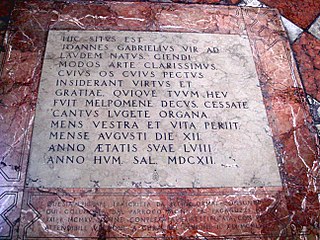
Giovanni Gabrieli was an Italian composer and organist. He was one of the most influential musicians of his time, and represents the culmination of the style of the Venetian School, at the time of the shift from Renaissance to Baroque idioms.

Vespro della Beata Vergine, SV 206, is a musical setting by Claudio Monteverdi of the evening vespers on Marian feasts, scored for soloists, choirs, and orchestra. It is an ambitious work in scope and in its variety of style and scoring, and has a duration of around 90 minutes. Published in Venice as Sanctissimae Virgini Missa senis vocibus ac Vesperae pluribus decantandae, cum nonnullis sacris concentibus, ad Sacella sive Principum Cubicula accommodata, it is sometimes called Monteverdi's Vespers of 1610.
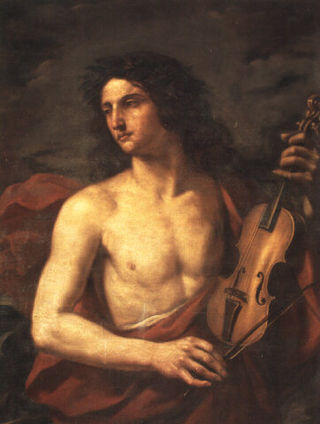
L'Orfeo, sometimes called La favola d'Orfeo[la ˈfaːvola dorˈfɛːo], is a late Renaissance/early Baroque favola in musica, or opera, by Claudio Monteverdi, with a libretto by Alessandro Striggio. It is based on the Greek legend of Orpheus, and tells the story of his descent to Hades and his fruitless attempt to bring his dead bride Eurydice back to the living world. It was written in 1607 for a court performance during the annual Carnival at Mantua. While Jacopo Peri's Dafne is generally recognised as the first work in the opera genre, and the earliest surviving opera is Peri's Euridice, L'Orfeo is the earliest that is still regularly performed.
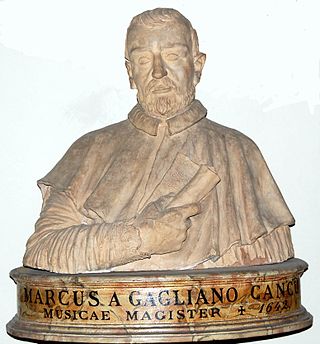
Marco da Gagliano was an Italian composer of the early Baroque era. He was important in the early history of opera and the development of the solo and concerted madrigal.
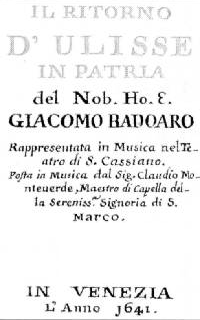
Il ritorno d'Ulisse in patria is an opera consisting of a prologue and five acts, set by Claudio Monteverdi to a libretto by Giacomo Badoaro. The opera was first performed at the Teatro Santi Giovanni e Paolo in Venice during the 1639–1640 carnival season. The story, taken from the second half of Homer's Odyssey, tells how constancy and virtue are ultimately rewarded, treachery and deception overcome. After his long journey home from the Trojan Wars Ulisse, king of Ithaca, finally returns to his kingdom where he finds that a trio of villainous suitors are importuning his faithful queen, Penelope. With the assistance of the gods, his son Telemaco and a staunch friend Eumete, Ulisse vanquishes the suitors and recovers his kingdom.
Giovanni Croce was an Italian composer of the late Renaissance, of the Venetian School. He was particularly prominent as a madrigalist, one of the few among the Venetians other than Monteverdi and Andrea Gabrieli.

Ottavio Rinuccini was an Italian poet, courtier, and opera librettist at the end of the Renaissance and beginning of the Baroque eras. In collaborating with Jacopo Peri to produce the first opera, Dafne, in 1597, he became the first opera librettist.
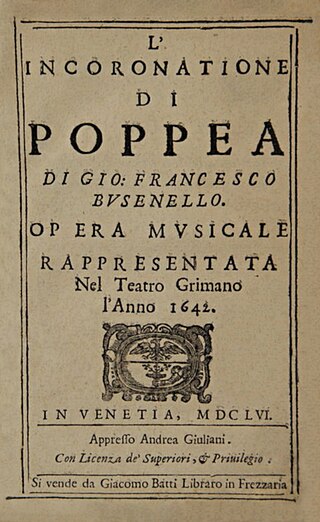
L'incoronazione di Poppea is an Italian opera by Claudio Monteverdi. It was Monteverdi's last opera, with a libretto by Giovanni Francesco Busenello, and was first performed at the Teatro Santi Giovanni e Paolo in Venice during the 1643 carnival season. One of the first operas to use historical events and people, it describes how Poppaea, mistress of the Roman emperor Nero, is able to achieve her ambition and be crowned empress. The opera was revived in Naples in 1651, but was then neglected until the rediscovery of the score in 1888, after which it became the subject of scholarly attention in the late 19th and early 20th centuries. Since the 1960s, the opera has been performed and recorded many times.
Marcantonio Negri was an Italian composer, singer, and musical director of the early Baroque era. He was in the musical establishment of St. Mark's Basilica in Venice at the same time as Monteverdi, and was well known as a composer at the time.
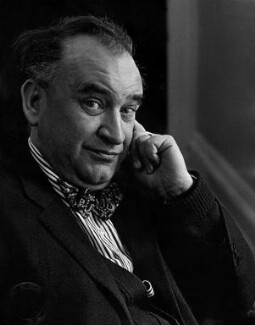
Denis Midgley Arnold was a British musicologist.
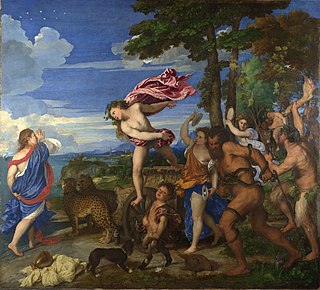
L'Arianna is the lost second opera by Italian composer Claudio Monteverdi. One of the earliest operas in general, it was composed in 1607–1608 and first performed on 28 May 1608, as part of the musical festivities for a royal wedding at the court of Duke Vincenzo Gonzaga in Mantua. All the music is lost apart from the extended recitative known as "Lamento d'Arianna". The libretto, which survives complete, was written in eight scenes by Ottavio Rinuccini, who used Ovid's Heroides and other classical sources to relate the story of Ariadne's abandonment by Theseus on the island of Naxos and her subsequent elevation as bride to the god Bacchus.
Denis William Stevens CBE was a British musicologist specialising in early music, conductor, professor of music and radio producer.
Aquilino Coppini was an Italian musician and lyricist. While in the service of Cardinal Federico Borromeo, he specialized in creating sacred contrafacta of secular madrigals. His contrafacta are of interest for their concentration on Monteverdi's madrigals and for the form in which he treats the poetic text. According to Antonio Delfino, "rather than simply replacing the original text with a liturgical one, he ‘spiritualized’ then through a careful translation which, like an exercise in rhetorical expertise, reproduces the phonemes, accents and rhythms of the secular text." In a letter to Hendrik van den Putten published in Epistolarum libri sex (1613), Coppini says that "the Monteverdi pieces need longer pauses, resting occasionally, allowing retardation, and at times even pressing on. There is in them a wonderful power to move the passions exceedingly."
Janet Beat is a Scottish composer, music educator and music writer. She was born in Streetly, Staffordshire, England and studied piano privately and horn at the Birmingham Conservatoire before reading music at Birmingham University, graduating with a Bachelor of Music degree in 1960.Master of Arts [Birmingham University] 1968
Giulio Cesare Monteverdi (1573–1630/31) was an Italian composer and organist. He was the younger brother of Claudio Monteverdi.

The Italian composer Claudio Monteverdi (1567–1643), in addition to a large output of church music and madrigals, wrote prolifically for the stage. His theatrical works were written between 1604 and 1643 and included operas, of which three—L'Orfeo (1607), Il ritorno d'Ulisse in patria (1640) and L'incoronazione di Poppea (1643)—have survived with their music and librettos intact. In the case of the other seven operas, the music has disappeared almost entirely, although some of the librettos exist. The loss of these works, written during a critical period of early opera history, has been much regretted by commentators and musicologists.
Sancta Maria refers to Saint Mary, mother of Jesus Christ.
Crotti is an Italian surname. Notable people with the surname include:











